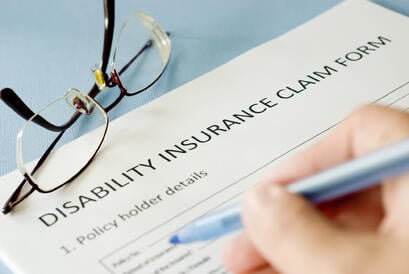Published on: August 21, 2014
 Getting the social security benefits you need is highly dependent on how you handle the disability application process and how effectively you provide evidence for your claim; it all depends on how much you know about SSDI.
Getting the social security benefits you need is highly dependent on how you handle the disability application process and how effectively you provide evidence for your claim; it all depends on how much you know about SSDI.
While you may think your unique case is a no-brainer, and that of course you’ll get the critical SSDI benefits you need, too often applications fail because would-be recipients lack understanding of how SSDI works, and what factors add up to approval decisions. Understanding the mysteries of SSDI eligibility is probably the most crucial step in getting the disability benefits you need.
1.) For Most Recipients, SSDI Accounts for a Majority of Their Income
In 2013, the Center for American Progress found that, for two-thirds of recipients, social security disability insurance (SSDI) accounted for over 50% of their annual income. For those recipients with yearly average earnings around $20,000, SSDI benefits replaced about 58% of their that income (or, roughly $11,500).
The Center also estimated that annual SSDI benefits accounted for over 90% of income for almost half of all recipients. When a person with a disability successfully applies for SSDI, he/she receives a level of income that can, in part, compensate for the inability to work.
2.) The Role of Demographics and the Recipient Population
As general workforce and health trends change over time, so does the population applying for and receiving SSDI benefits. As the huge Baby Boom generation ages closer to retirement, the risk of disability increases exponentially every ten years; financial strains, too, have required that those in this generation often work well into their 60s, or even 70s. What this does is create a workforce environment in which more and more people must continue working, despite their disabilities.
Additionally, as more and more women stay in the workforce for the long-term, the general population requiring SSDI benefits also increases.
3.) SSDI and SSI Are Lifelines for Over 12 Million Recipients
It’s often shocking to consider just how many people rely on SSDI and SSI benefits to live healthy, independent lives. Today, around 12 million people with disabilities receive these benefits, with around 9 million of those receiving SSDI. The roughly $1,000 that these recipients receive monthly is the only thing keeping their living standards afloat.
SSDI and SSI benefits are not just for the elderly with disabilities; these benefits help millions of hard-working, disabled Americans keep a roof over their families’ heads every year.
4.) In Some Circumstances, You Can Get Both SSDI and SSI
In certain cases, disabled persons can receive both SSDI and SSI benefits; these benefit programs are not mutually exclusive, and, under some circumstances, you may be eligible to receive both forms of income.
However, the terms and eligibility for receiving either (and both at the same time) are very specific, and receiving SSDI can preclude eligibility for SSSI. It’s for this reason that many disabled people seeking these benefits consult with Disability Experts of Florida before applying.
5.) Sufficient Evidence Can Make or Break an Application
When applying for disability benefits, substantial medical evidence is an absolute necessity in successfully pursuing eligibility. The Social Security Administration (SSA) provides disability benefits under SSDI for only those with total disability; disability that makes it impossible for applicants to perform in the workforce as they did prior to their disability.
For SSDI qualification, there must be clear, concrete medical evidence, diagnosed by a licensed doctor, specialist or other certified professional. To receive the SSDI benefits you need, evidence reported by less official sources (such as nurse practitioners or clinical workers) is given much less weight.
6.) Work Requirements Prior to SSDI
In addition to substantial medical evidence of a disability, those applying for SSDI benefits must have sufficient work history prior to application. Typically, SSDI requires that eligible recipients work and pay into Social Security for at least 5 of the 10 years preceding the year in whcih they became disabled.
SSDI benefits are all about covering lost income due to disability-related work decline; to receive these benefits prior work must be well accounted for.
7.) Social Security Numbers Are Never Reissued
Less related to actually receiving benefits, but still a surprising fact about social security disability insurance, is that social security numbers are never reissued, under any possible circumstances. Your social security number is essentially a tracking tag, which follows how much you work and input into social security, which is used to determine benefits should you require them.
The SSA estimates that over 5 million new social security numbers are added to this tracking system every year; despite this annual growth, numbers have never had to be repeated, nor the numerical counting system changed.
8.) The Cap to Social Security Benefits
Disability-based Social Security benefits are reflective of annual and monthly incomes of those involved, most often accounting for over 50% of a recipient’s income. However, there are limits to how much social security a person and household may receive.
This amount is called the Family Maximum Amount, and is determined by the benefits you receive through the SSDI program.
9.) Meeting SSDI Criteria in Florida
For many seeking SSDI benefits in the state of Florida, surprises come when applying for these benefits, or when a decision is made regarding their eligibility. Many underestimate the importance of accurate evidence, prior work history and Social Security standards in the SSA’s decision on beneficiary eligibility.
To fully grasp how the application process works, and for the best results in getting the financial benefits of SSDI in Florida, don’t go about the process alone; contact a professional at Disability Experts of Florida first.

